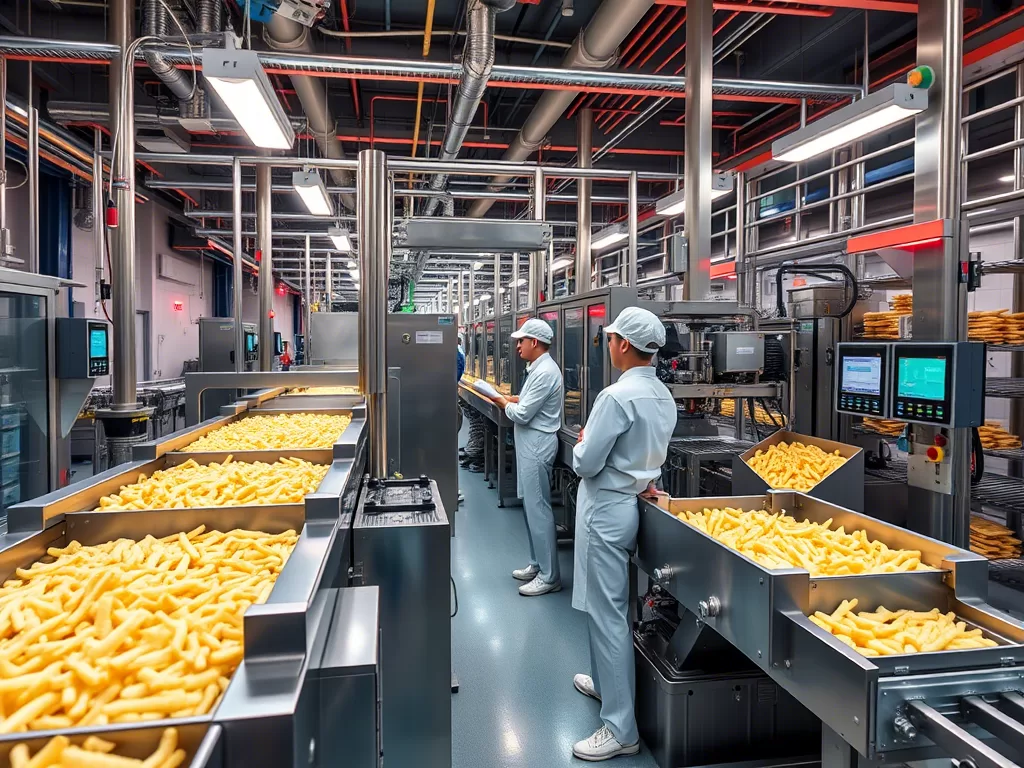India’s flakes industry is booming, but is large-scale potato processing (flakes & fries) a smart investment or a financial trap? While many investors have poured ₹60-150 Cr into massive processing units, the reality of market saturation, overproduction, and declining ROI raises serious concerns. This article intelligently compares large vs. mid-scale flakes businesses, revealing why diversified flakes (ragi, corn, multigrain) offer higher profits and lower risks than traditional potato processing. If you’re planning to invest, this deep analysis will help you make a future-proof decision.
Play Smart, Not Big
Large-scale potato processing (flakes & fries) is no longer the golden investment it once appeared to be. Market saturation, raw material dependency, and price competition make it a high-risk game with uncertain ROI. Instead, smaller, adaptable units focusing on diversified flakes & niche markets are the future of food processing in India.
| Factor | Potato Flakes (Large Unit INR 60-100 Cr) | Potato Flakes (Small Unit INR 5-20 Cr) | French Fries (Large Unit INR 80-150 Cr) | French Fries (Small Unit INR 10-30 Cr) |
|---|---|---|---|---|
| Initial Investment | INR 60-100 Cr | INR 5-20 Cr | INR 80-150 Cr | INR 10-30 Cr |
| Market Demand | Saturated, Price Wars | Niche, Steady Demand | High but Highly Competitive | Profitable in Premium/Niche Segments |
| Raw Material Supply (Potatoes) | High Dependency, Seasonal Price Fluctuations | More Control, Flexible Sourcing | High Dependency, Affected by Cold Storage & Crop Failures | Better Supply Management Possible |
| Processing Capacity Utilization | Hard to Maintain Full Capacity, High Fixed Costs | Easier to Adjust Based on Demand | Dependent on Consistent Large Orders | Easier to Scale Gradually |
| Competition & Price Pressure | Intense, Global Players, Commodity Pricing | Lower, Can Focus on Premium/Niche Products | Very High, Dominated by Global Fast-Food Chains | Can Target Local QSRs & Emerging Markets |
| Profit Margins | Low Due to Bulk Pricing & Market Saturation | Higher as Costs are Controllable | Low Due to Contract-Based Pricing | Higher in Specialized or Regional Markets |
| Scalability & Expansion | Limited by Overproduction & Low Margins | Easier to Expand with Demand | Requires Huge Distribution Networks | More Flexible & Cost-Efficient Growth |
| Risk of Overproduction | Very High – Market is Crowded | Low – Demand is Easier to Predict | Very High – Large Units Need Large Orders | Lower – Can Adapt to Market Needs |
| Business Sustainability | Risky, Dependent on Export & Bulk Buyers | Sustainable, Can Serve Smaller, Diverse Clients | Risky, Tied to Fast-Food Chains & Imports | More Sustainable in Domestic Market |
📉 Why Large Processing Units Are a Risky Bet (2025 & Beyond)
1️⃣ 🔥 Market Saturation & Price Wars:
- Potato flakes & French fries are dominated by global players. Large processing plants compete on price, making it hard to sustain high profit margins.
- Export markets are volatile, making large-scale dependency risky.
2️⃣ 🌾 Raw Material Limitations:
- Large units need continuous raw material supply, but potato production is seasonal and depends on factors like cold storage, weather conditions, and procurement efficiency.
- Any fluctuation in potato supply affects ROI drastically.
3️⃣ ⚠️ Overproduction & Fixed Costs:
- Large units must run at full capacity to justify investment.
- If demand slows down, excess production leads to waste, price drops, and losses.
4️⃣ 💸 High Break-Even & ROI Challenges:
- A INR 100 Cr unit takes 7-10 years to break even, assuming consistent demand & full capacity utilization.
- If demand drops, even small disruptions can cause heavy losses.
5️⃣ 🚀 Why Smaller Units Are Smarter Investments:
- Lower risk, easier scaling, and profitability at lower production levels.
- Better adaptability to shifting market demands (millet flakes, fruit flakes, customized products).
- Targeted local & regional markets instead of competing with bulk producers.
Key Financial Metrics for Comparison
| Financial Metric | Large-Scale Potato Flakes (₹60-100 Cr Investment) | Mid-Scale Potato Flakes (₹5-20 Cr Investment) | Large-Scale French Fries (₹80-150 Cr Investment) | Mid-Scale French Fries (₹10-30 Cr Investment) |
|---|---|---|---|---|
| Investment Required | ₹60-100 Cr | ₹5-20 Cr | ₹80-150 Cr | ₹10-30 Cr |
| Revenue Potential (Annual) | ₹90-140 Cr | ₹15-50 Cr | ₹120-180 Cr | ₹20-70 Cr |
| Gross Profit Margin | 12-18% | 20-30% | 10-15% | 22-28% |
| EBITDA Margin | 8-12% | 15-22% | 6-10% | 12-20% |
| ROI (5-Year Avg.) | 8-12% | 22-35% | 7-11% | 25-32% |
| Break-even Period | 7-10 Years | 3-5 Years | 8-12 Years | 3-6 Years |
| CAGR (Revenue Growth) | 6-10% | 12-18% | 5-9% | 15-22% |
| Payback Period | 8-10 Years | 4-6 Years | 10-12 Years | 5-7 Years |
Why is EBITDA Margin Important?
EBITDA Margin stands for Earnings Before Interest, Taxes, Depreciation, and Amortization as a percentage of total revenue. It is a key profitability metric that shows how efficiently a company is generating profits before accounting for financial & non-operational costs.
✅ Measures Operating Profitability – It removes financial distortions and focuses on core business performance.
✅ Better for Comparing Businesses – Since it excludes interest & taxes, it helps compare companies with different capital structures.
✅ Investors Use It for Valuation – Higher EBITDA margins indicate strong profitability & operational efficiency.
Intelligent Foresight: The Future of Food Processing in India
✅ Smart investors should rethink INR 100 Cr investments in large potato processing units.
✅ Small & mid-sized units (INR 5-30 Cr) offer better flexibility, higher profitability, and lower risk.
✅ Diversification into millet flakes, fruit flakes, and healthy alternatives can yield better long-term results.

